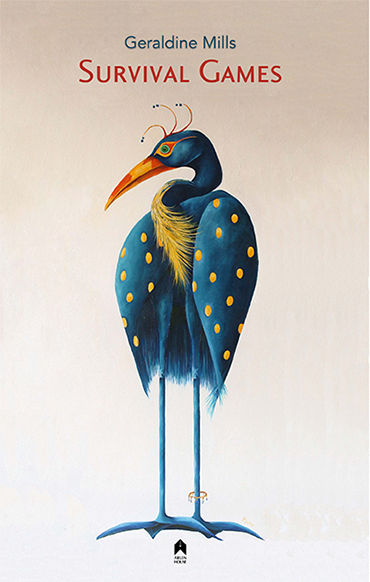Bone Road is a great achievement. The words that run through the sequence, stitching it together, are as simple and piercing as the tolling of a bell: upsticks, hunger, gold, heart, home, and bone/bones. But it’s a deceptive simplicity, counterpointed by the array of rhyme schemes, along with found poems, prose poems, conversations. I’m struck by ‘Phthisis’ especially in this Covid time, by ‘Home’ where the Old vs New World is expressed in three small stanzas, by ‘Butter Stamp’ where the homely creation overcomes such pain and by the final poem ‘Bone Road’ with its repeating pattern – an end and a new beginning.
— Charles Fanning, author of The Irish Voice in America
Geraldine Mills’ new collection, Bone Road, is a book length collection of lyric poems engaged with points where national and family history meet. Her imagination, like Emily Dickinson’s and Paul Celan’s, finds its most fertile ground in the smaller and tighter spaces that put the poet’s gifts under the most stress, and where diction, syntax, and technique must be at its most razor sharp. Mills’ short poems are brief narratives finely distilled so that the best is retained though we also, as readers, engage with acts of erasure and suggestion that are central to the letter and the lyric. In this respect, the poems stand as individual works and moments while also providing seeds to grow in the imagination of the reader. Each poem in Bone Road is a breath – of a human being, of a landscape, of hope, of return, of a diaspora. It is a moving, and beautifully crafted act of witness.
— Eamonn Wall, Irish Literary Supplement (USA)
‘The longest day still entering their dawn’ opens the poem ‘Leaving’ in Bone Road. It is a skilled writer who can pack famine, the promise of a new world, and hope into a poetry collection. The power lies in its threads – cotton, loom, bay, and family. Hunger is a longing for place as well as nourishment. Geraldine Mills weaves a tapestry of deprivation and renewal through the actions of her ancestors, imprinted and passed on like her great-grandmother’s butter stamp.
— Lisa C Taylor, author of Impossibly Small Places
Mills succeeds, not only in retrieving the lost parts of her family’s history, but also in retrieving the harrowing experience suffered by the countless numbers who were forced to leave their homeland due to hunger and poverty.
— Des Kenny, Galway Advertiser
In Bone Road, Geraldine Mills has captured the soul and essence of the journey our families embarked on. Certain lines remain in my mind – ‘where the poor sucked stones from the road ... ate their children's hair’. These lines hit me in a way no other description of the famine and the desperation has. And the sadness and longing of her family to return to Ireland is a variation on desperation.
— Maggie O’Brien, great-granddaughter
of Patrick and Cath (Dixon) Monaghan
who shared a house with the author’s family.
This book has two editions, Bone Road (Arlen House, 2019) ISBN 978-1-85132-215-2 and Bone Road in Word and Image (Arlen House, 2020)
ISBN 978-1-85132-244-2. They are both available through:
Kennys.ie
,
BookDepository.com
and
Syracuse University Press (USA)











